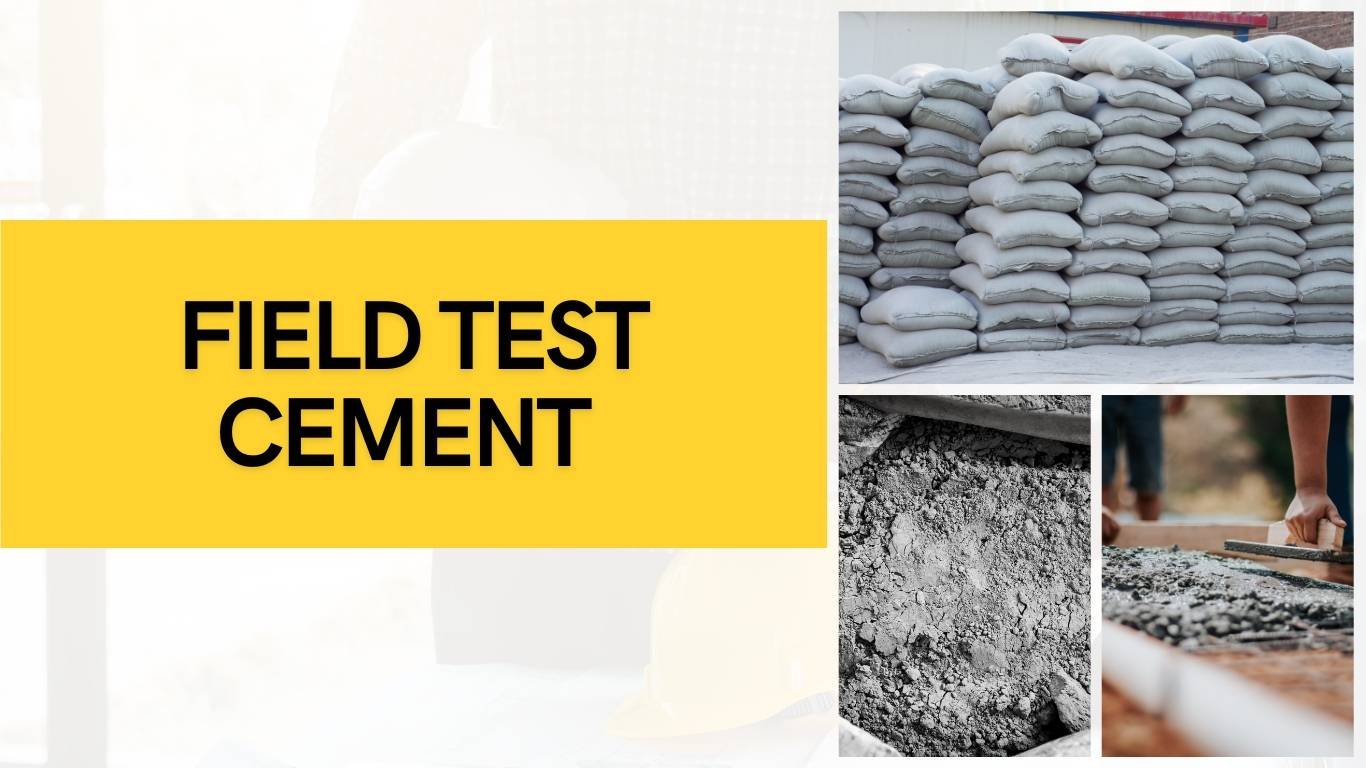Field Test of Cement on Construction Site and its Methods
For every lot received at the site, the following field tests should be performed:
1. Grade & Colour:
The cement should be of the grade which is indented and its colour should be grey.
2. Freshness Test:
Choose any bag at random to check for the manufacturing date, It should not be more than 1 month old
3. Smoothness Test:
Open the cement bag from one corner. Take a pinch of dry cement and rub it between your fingers It should feel silky
4. Lump Test:
Take any cement bag at random and test for the presence of Lumps. Fresh cement should be in powder form only. Any cement bag with lumps should be rejected.
5. Floating Test:
Take a glass jar filled with clean water and add some dry cement slowly to the water Good cement floats for a while and sinks slowly to the bottom. Any lightweight impurity may remain floating even after cement sinks. A heavier impurity sinks immediately.
6. Paste Test:
Prepare 5cm x5cm x 5cm cement paste in plastic or tin boxes and place the cube in water immediately. After 24 hours the edge, of the cubes should remain sharp and it should gain some strength.
7. Average Weight Test:
Take 5 bags at random from the lot and take the average weight of the bags. The difference in average weight should not be more than 5%.
Field tests for cement
Field tests for cement are essential to ensure its quality and suitability for construction purposes. These tests assess various properties of cement that impact its performance and durability in concrete structures.
One crucial test is the compressive strength test, which evaluates the cement’s ability to withstand load. Cement samples are prepared and subjected to controlled compression until failure, providing valuable information about its strength.
Field Test Cement Construction
The fineness test measures the particle size distribution of cement particles, which influences its reactivity and hydration rate. This test involves using sieves to determine the percentage of particles of different sizes.
The setting time test gauges the time required for cement to set and harden. It helps determine the workability of the cement and its suitability for different construction applications.
Soundness testing ensures that the cement doesn’t undergo excessive expansion during setting, which can lead to cracking. The Le Chatelier method measures the change in length of cement samples immersed in water.
Other vital tests include determining the cement’s specific gravity, which relates to its density, and its heat of hydration, which assesses the heat generated during the hydration process.
Field tests for cement aid in making informed decisions during construction, enabling the selection of the right cement type and ensuring the long-term integrity of structures. Adhering to standardized testing procedures guarantees accurate and reliable results, contributing to safe and durable construction projects.
Remember, accurate testing is crucial to ensure the quality and performance of cement in construction projects. Always follow proper testing procedures and standards to obtain reliable results.
Follow on Telegram https://t.me/civilworks
